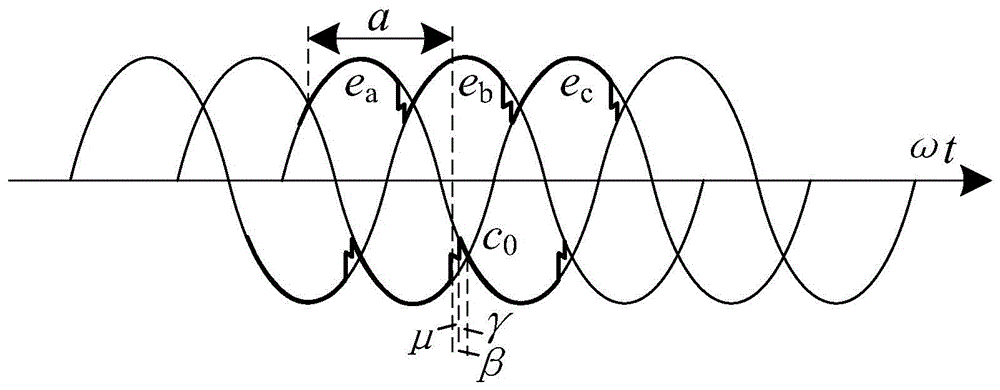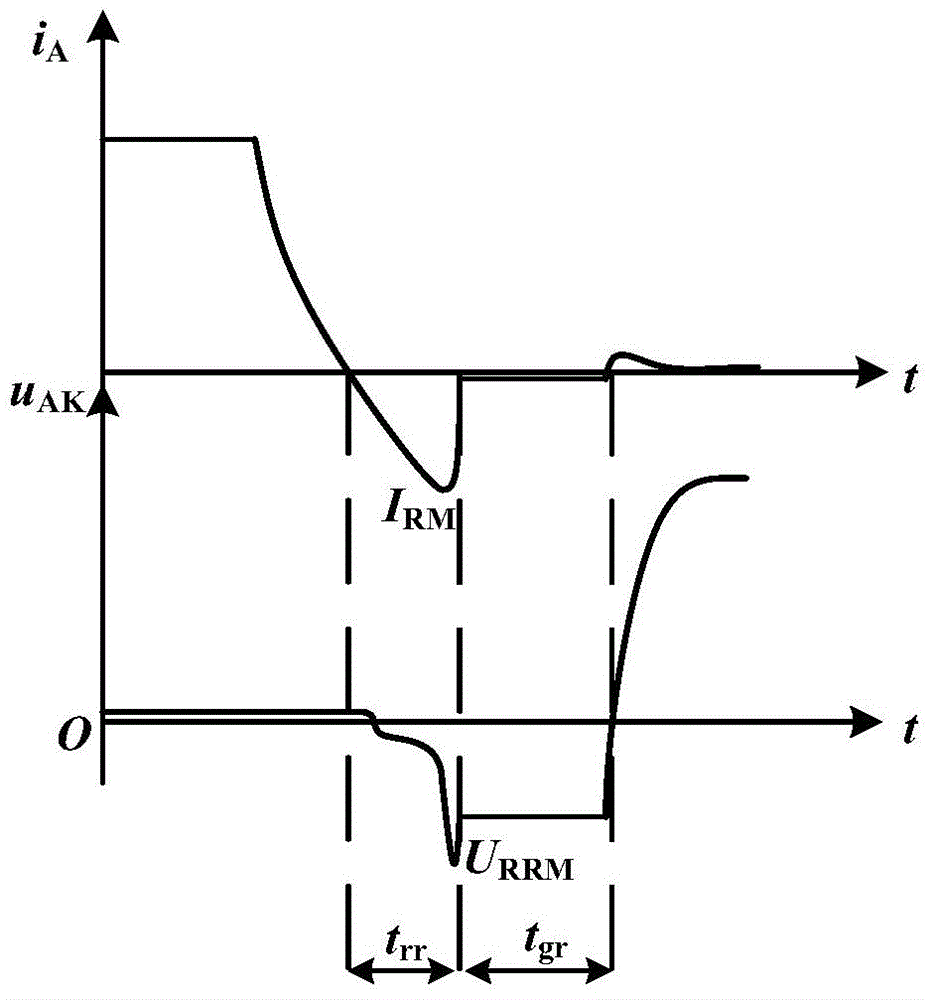A Circuit for Reducing Commutation Failure of Converter Valve
A commutation failure and commutation valve technology is applied in the direction of converting AC power input to DC power output, electrical components, output power conversion devices, etc. , increase the reactive power consumption of the system, etc., to achieve the effect of small transformation cost, simple design, and reducing the occurrence of commutation failure
- Summary
- Abstract
- Description
- Claims
- Application Information
AI Technical Summary
Problems solved by technology
Method used
Image
Examples
Embodiment Construction
[0026] The present invention will be further described below in conjunction with the accompanying drawings and embodiments.
[0027] The main principles are as follows:
[0028] Firstly, the mechanism of commutation failure is introduced, such as figure 1 Shown is the wiring diagram of the six-pulse converter valve on the inverter side, I d is the direct current, L d It is a smoothing reactor, take V6 and V5 conduction, and commutate from V5 to V1 as an example, explain the mechanism of commutation failure, the schematic diagram is as follows figure 2 As shown, where μ is the commutation overlap angle, β is the leading firing angle, and γ is the arc extinguishing angle.
[0029] In the process of commutating from V5 to V1, the two ends of V1 are e a with e c , withstand positive pressure e ac . To achieve commutation from V5 to V1, e must be satisfied c a , so the commutation must be at the natural commutation point c 0 completed before. Since V5 needs a carrier rec...
PUM
 Login to View More
Login to View More Abstract
Description
Claims
Application Information
 Login to View More
Login to View More - R&D
- Intellectual Property
- Life Sciences
- Materials
- Tech Scout
- Unparalleled Data Quality
- Higher Quality Content
- 60% Fewer Hallucinations
Browse by: Latest US Patents, China's latest patents, Technical Efficacy Thesaurus, Application Domain, Technology Topic, Popular Technical Reports.
© 2025 PatSnap. All rights reserved.Legal|Privacy policy|Modern Slavery Act Transparency Statement|Sitemap|About US| Contact US: help@patsnap.com



